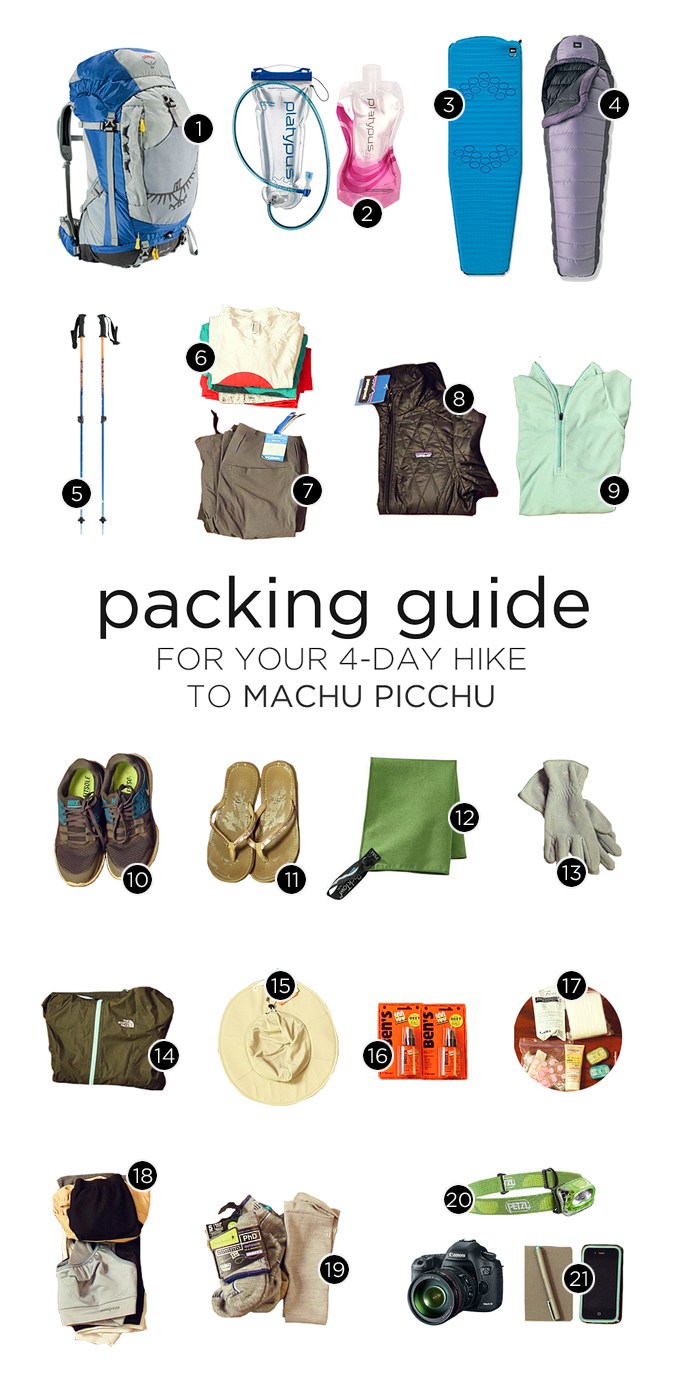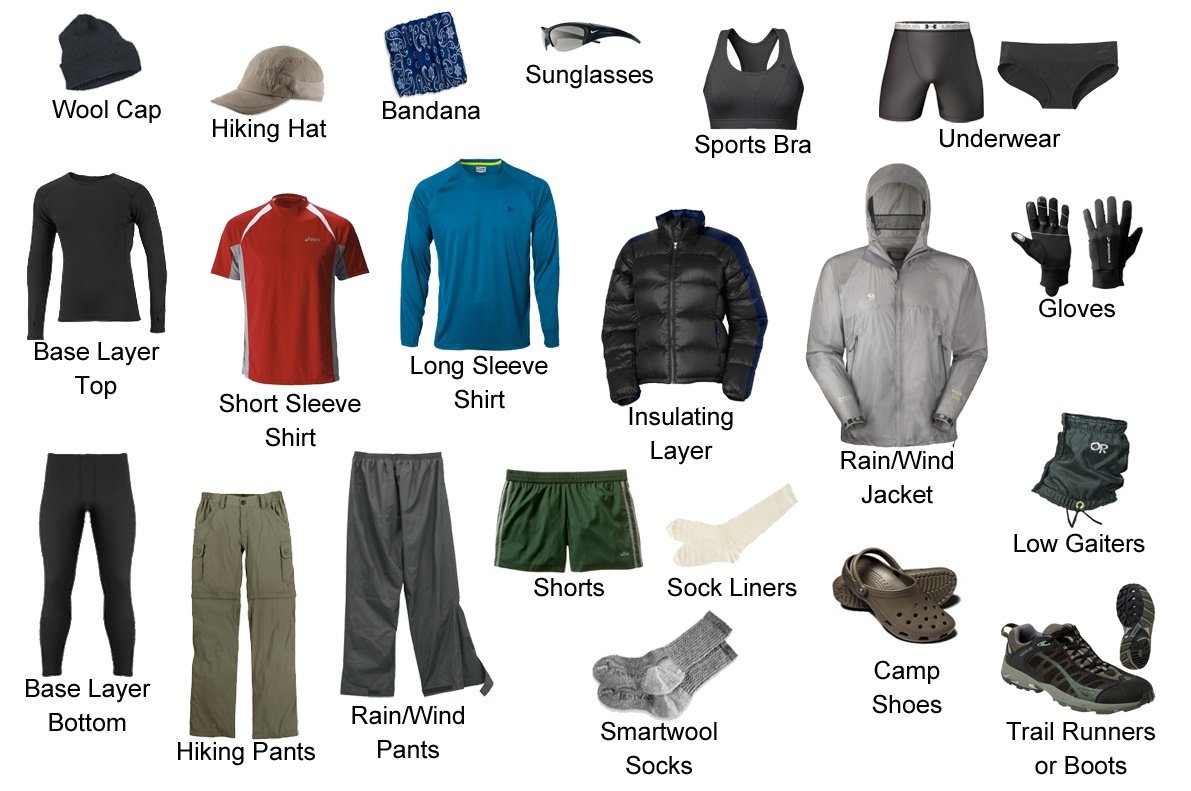
For sightseeing, casual clothing and good walking shoes are desirable and appropiate, and most cities don't requiere formal clothes, even for evenings. If you are doing business in Peru, you'll need the same attire you would wear in U.S. and European cities: For men, suits and ties, for women, suits for day wear, and for evening, depending on the occasion -ask your host or hostess- a cocktail dress or just a nice suit with a dressy blouse.
Travel in Rain-Forest areas will requiere long-sleeve shirts, long pants, socks, sneakers, a hat, a light waterproof jacket, a bathing suit (if you want to swim), sunscreen, and insect repellent. You can never have too many large resealable plastic bags (bring a whole box), which are ideal for storing film, protecting official documents from rain and damp, and quarantining stinky socks.
If you are visiting the andes, Inca Trail, Machu Picchu or alternative trek, bring a jacket and sweater, or acquiere one of the handknit sweater or ponchos crowding the marketplaces. Evening temperatures in Cusco are rarely above the 50s. For beach vacations, you'll need lightweight sportswear, a bathing suits, a sun hat and lots of sunscreen. Peruvian are fairly conservative, so don't wear bathing suits or other revealing clothing away from the beach.
Other useful items include a Travel flashlight and extra batteries, a pocket knife with a bottle opener (put it in your checked luggage), a medical kit, binoculars, and a calculator to help with currency conversions. A sarong or light cotton blanket can have many uses: beach towel, picnic blanket, and cushion for hard seats and, most important, always travel with tissues or a roll of toilet paper as sometimes it is difficult to find in local restrooms.

What to pack for Inca Trail?, it's important to consider the variable weather conditions and the duration of the trek. Here's a comprehensive packing list to ensure you have everything you need for a comfortable and enjoyable experience:
Clothing:
Backpack:
Sleeping Gear:
Personal Essentials:
Hydration and Snacks:
Miscellaneous:
Remember to pack light and bring only the essentials, as you'll be carrying your own backpack during the trek. It's also a good idea to check with your tour operator for any specific packing recommendations or restrictions they may have.
Lastly, don't forget to review the weather forecast for your travel dates and make adjustments to your packing list accordingly. Enjoy your Inca Trail adventure!

When hiking Machu Picchu, it's essential to wear appropriate clothing that will keep you comfortable throughout the trek. Here are some recommendations for what to wear:
Hiking Shoes: Wear sturdy and comfortable hiking boots or trekking shoes with good ankle support. Make sure they are broken in before the trip to avoid blisters and discomfort.
Moisture-Wicking Socks: Choose moisture-wicking socks that provide cushioning and help keep your feet dry and comfortable during long hikes. Avoid cotton socks, as they tend to retain moisture and can lead to blisters.
Hiking Pants: Opt for lightweight and breathable hiking pants that allow freedom of movement. Convertible pants are a great option as they can be converted into shorts if needed.
Layered Tops: Wear moisture-wicking and breathable T-shirts or long-sleeved shirts as base layers. Layering is key to adapting to changing temperatures and weather conditions. Consider a lightweight fleece or down jacket for colder mornings or higher altitudes.
Rain Jacket or Waterproof Shell: Bring a waterproof rain jacket or shell to protect yourself from rain showers. Look for a lightweight and packable option that can easily fit into your backpack.
Hat and Sunglasses: Wear a hat with a wide brim to protect your face and neck from the sun. Sunglasses with UV protection are essential to shield your eyes from intense sunlight at high altitudes.
Gloves and Beanie: Carry lightweight gloves and a beanie to keep yourself warm during colder mornings or at higher altitudes. It can get chilly, especially during the early morning hikes.
Sunscreen and Bug Repellent: Apply sunscreen with a high SPF to protect your skin from the sun's rays. Additionally, use bug repellent to ward off mosquitoes and other insects.
Remember, weather conditions can be unpredictable, and it's essential to be prepared for changes in temperature and rainfall. Layering your clothing allows you to adjust accordingly throughout the day. Don't forget to pack a lightweight daypack for carrying essentials like water, snacks, camera, and other personal items during the hike.
When planning to hike Machu Picchu, there are several essential items you'll need to ensure a safe and enjoyable experience. Here's a list of what you'll need:
Inca Trail Permit: If you plan to hike the Inca Trail, you'll need to obtain a permit in advance. These permits have limited availability and should be secured well in advance through a licensed tour operator.
Machu Picchu Entry Ticket: To enter the Machu Picchu site, you'll need to purchase an entry ticket. This can be done online in advance or in person at the official ticket office in Aguas Calientes, the town near Machu Picchu.
Passport: Carry your valid passport with you as it is required for entry to Machu Picchu. The name on your passport must match the name on your permit and ticket.
Proper Hiking Gear:
Hydration and Snacks:
Basic First-Aid Kit: Carry a small first-aid kit with essentials like adhesive bandages, blister pads, pain relievers, antiseptic wipes, and any personal medications you may need.
Cash: Carry enough local currency (Peruvian Soles) for meals, drinks, tips, and any other expenses during your hike.
Remember to check the specific requirements and recommendations from your chosen tour operator, as they may have additional suggestions or requirements for the hike. Stay prepared, stay hydrated, and enjoy your unforgettable hike to Machu Picchu!
The best season is during the dry season which starts in April and ends in September. If you travel in June, we recommend you to book the Inca Trail tours and also Salkantay trek or Sacred valley to Machu Picchu that are other incredible tours located in the Andes near Cusco.
The months of June, July, and August are considered the peak season, with a higher number of visitors. If you prefer to avoid large crowds, you may consider visiting during the shoulder months of May or September when the weather is still favorable, and the trails are relatively quieter.
It's important to note that the Inca Trail is closed annually in February for maintenance, so it's advisable to plan your visit during the months when the trail is open.